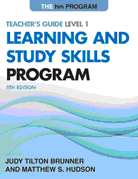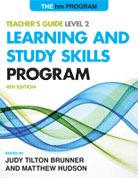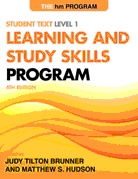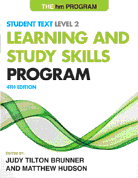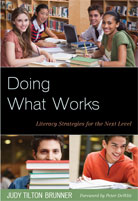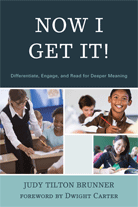Instructional Solutions Group
The Level 1 hm Learning and Study Skills Program was designed to provide learning and study skills strategies for students in grades 5-7 through a series of activity-oriented units. It is structured on the assumption that an activity-oriented lesson is the most effective instructional strategy for the teaching of study skills: more succinctly, that “learning by doing” is the best way study smart.
Level I includes a pretest and post-test, a wide variety of teaching suggestions, unit summaries, activities for retrieval and closure as well as teaching adaptations through the use of technology. It was published to help teachers assist students in the development of essential study skills and to reinforce their existing strategies that work. The program supports academic independence for students that have a wide range of ability with college and career readiness as a tangible and realistic goal.
The hm Learning and Study Skills Program: Level II is designed to provide an introduction to learning and study skills for 8th, 9th, and 10th grade students through a series of activity-oriented units. It is structured on the assumption that an activity-oriented lesson is the most effective instructional strategy for the teaching of study skills: more succinctly, that “learning by doing” is the best way "study smart."
The Level II Teacher’s Guide includes a pretest, a wide variety of teaching suggestions, unit summaries, activities for retrieval and closure as well as teaching adaptations through the use of technology. It was published to help teachers assist students in the development of essential study skills and to reinforce their existing strategies that work. The Program supports academic independence for students that have a wide range of ability with college and career readiness as a tangible and realistic goal.
Young adolescents have different developmental needs than other students. Level 1 of the The HM Learning and Study Skills Program is geared for grades 5-7, and encourages a student's growing capacity for abstraction while the activity-oriented structure keeps them academically engaged. Students will learn to harness their learning preferences in a way that best suits their individual needs.
Each student workbook teaches and reinforces the essential skills students need to be successful: skills for perceiving, organizing, making sense of, and using ideas and data. The workbook functions as a text for learning study skills and as a reference resource throughout the year. Remember, learning and study skills are not substitutes for hard work. But, by following the suggestions within this workbook, students should be able to use their time and energy more efficiently.
The hm Learning and Study Skills Program: Level II is designed to provide an introduction to learning and study skills for 8th, 9th, and 10th grade students through a series of activity-oriented units. It is structured on the assumption that "learning by doing" is the best way to effectively learn how to "study smart."
Learning and study skills are important for learning. They are methods and ways of doing things, that help make learning easier. Understanding how to study can also facilitate learning by assisting students as they complete assignments correctly and efficiently during a specified period of time. Just like any other skill, knowing how to learn and study proficiently must be learned and practiced over time. The Program has been designed to help students learn more efficiently and effectively.
Doing What Works: Literacy Strategies for the Next Level will assist educators as they support students in the mastery of vocabulary, comprehension, and study skills required by the Common Core State Standards.
Doing What Works provides practical, effective, and research-based strategies to help students remember and understand what they read at the highest levels of cognition. It provides instruction in layering of texts, close reading, collaboration, use of a variety of sources, learning uncommon vocabulary, and answering text-dependent questions - all designed to support students as they become academically independent.
Now I Get It! Differentiate, Engage, and Read for Deeper Meaning is a practical, easy-to-use resource for classroom teachers, literacy coaches, school administrators, and post-secondary instructors. This book has a variety of literacy activities that will make learning difficult and challenging material enjoyable for all types of learners. The strategies will support students as they prepare for local and state assessments.
- Easy to implement strategies
- Easy to read format
- Practical suggestions for teachers at all grade levels and subject areas
- Recommendations for adapting strategy for all levels of Bloom's Taxonomy
- Technology adaptations of selected strategies
- Suggestions for differentiation of each strategy
Literacy continues to be a hot topic for educators and parents. I Don't Get It! Helping Students Understand What They Read is a practical, easy-to-use resource for classroom teachers and literacy coaches. Parents will also find the information helpful as they assist their children with homework and support for reading comprehension.
This book will help to improve student literacy by offering a variety of strategies designed to help students think as they read printed text. All have been carefully considered for ease of use, utility in terms of differentiation, and simplicity of format. The author evaluates each strategy according to Bloom's Taxonomy and provides suggestions for adaptation through the use of technology. Providing practical, effective and research-based strategies designed to help students read, understand, and remember challenging material, the book can be read cover to cover, "on the run," or as a resource in response to a specific, expressed need by teaching staff.
- Easy to implement strategies
- Easy to read format
- Practical suggestions for teachers at all grade levels and subject areas
- Technology adaptations of selected strategies
- Evaluation of strategy based upon Bloom's Taxonomy

